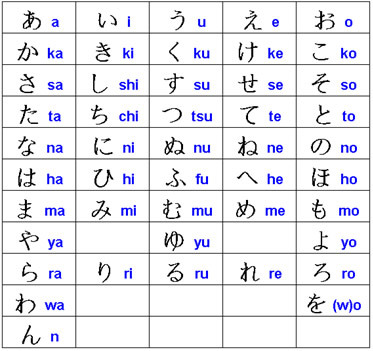If you find it difficult to learn Portuguese norms and rules, then imagine the Japanese, who have to learn to speak the language and write it in three different ways. That's because there are three ways to write Japanese: in Hiragana, Katakana and Kanji. These three alphabets are used to communicate in Japan and each one has its own peculiarities.
Hiragana has 46 characters each representing one syllable. To write a three-syllable word (with three syllables) in Hiragana, for example, three characters are used. It is the most used alphabet in Japan.
Katakana is very similar to Hiragana: it also has 46 characters that represent syllables. In both alphabets, each character represents a sound (like “ka”, the joining of the sound of “k” and the vowel “a”). The main difference between them is that Katakana is used to write country names, words of foreign or Western origins and also product names and onomatopoeias.
The more than 40,000 kanji form a completely different alphabet from the two above. More than an alphabet, Kanji is a set of symbols that represent ideas, concepts, and can have more than one meaning. Despite the large number of characters, it is necessary to know 1,945 of them to be considered literate in Japan (this is the number of kanji taught in schools). Therefore, it may be that an adult and literate Japanese may encounter kanji that he does not know throughout his life.
Thus, a kanji, or ideogram, is a “pictographic image” of what is meant. So, from a simple “radical” (a specific trait) it is possible to decompose several meanings, which makes learning easier. For example:

Japanese alphabets originated in Chinese and thus were adapted and transformed into Katakana, Hiragana and Kanji. Even with the adaptation and the passage of time (it is estimated that the first Japanese alphabet appeared in the fourth century), there is still a lot of similarity between Chinese and Japanese characters.
Hiragana and Katakana - how they work
The way to write some words in Japanese is quite peculiar. Some common letters of the Roman alphabet (the one we use) like “V” and “L” do not exist in either Hiragana or Katakana. Thus, it is common to hear Japanese changing the "V" for the "B" and the "L" for the "R" when speaking (eg, the English word "vilan", which means villain, would be called "biran" by a Japanese).
The vowels A, I, U, E, O (in that order) and the consonant N can be represented by just one character, in both Hiragana and Katakana. The other characters of the two alphabets are represented by two or more letters together, forming syllables.
See some examples of the two alphabets below:
Hiragana:
Katakana:
These are basic syllables of Japanese writing. There are still other variations of syllables, like “CHI” and “KYO”, or even syllables like “DA” and “JI”. Two examples of transcription in Hiragana, Katakana and Kanji:
Dream (Portuguese) = Yume (Japanese)
Hiragana:
Katakana:
Kanji:
Friend (Portuguese) = tomodachi (Japanese)
Hiragana:
Katakana:
Kanji:
Another curiosity of the Japanese alphabet is the inexistence of consonant clusters like “BR” and “TR”, for example. Because it is written (and spoken) syllabically, these consonant clusters end up being broken down into syllables with vowels. The word “Brazil”, for example, in Japanese, becomes “Bu-ra-ji-ro”. In addition to the decomposition of “BR”, the “S” with a “Z” sound, in this case, is replaced by the “J”.
Complicated, right? No wonder there are Japanese people who die old without being able to read a simple daily newspaper completely. But that's because, in addition to being the Japanese way of communicating in writing, kanji and characters are like an art form in Japan. His writing is delicate and even requires a correct order to draw the “strokes”. All of this is still kept today in the land of the rising sun, with the aim of preserving this ancient culture so appreciated around the world.
By Camila Mitye
Source: Brazil School - https://brasilescola.uol.com.br/japao/o-alfabeto-japones.htm


